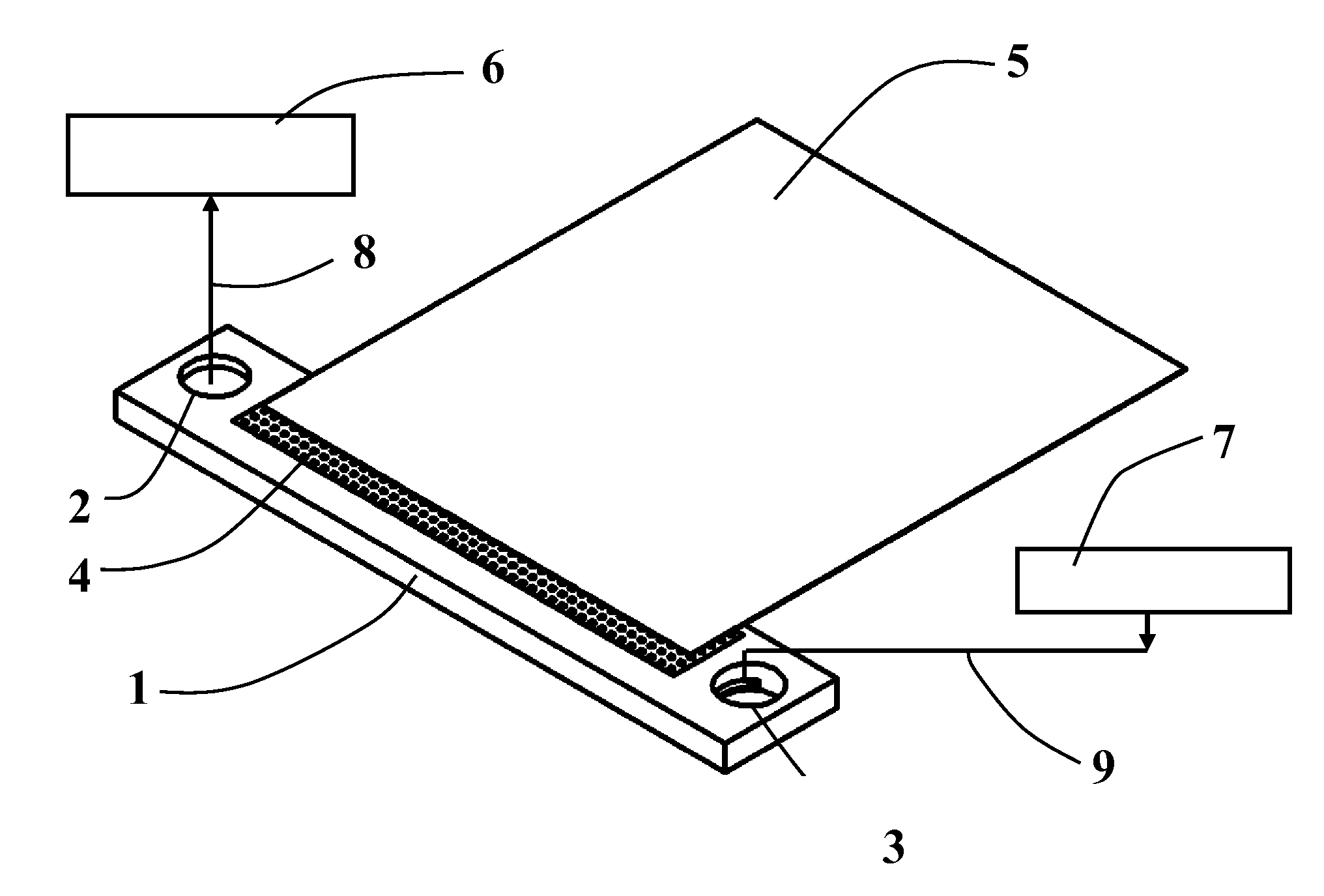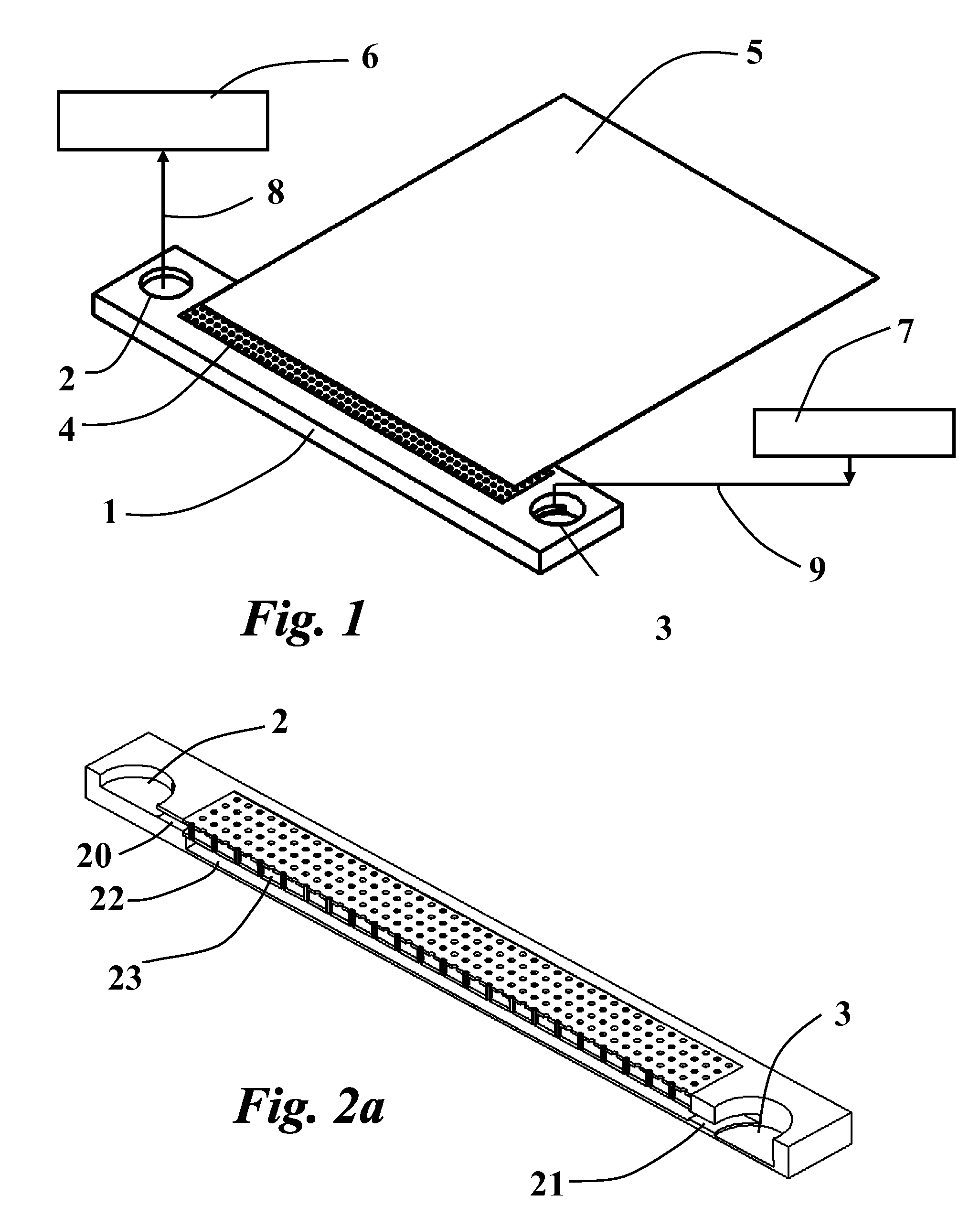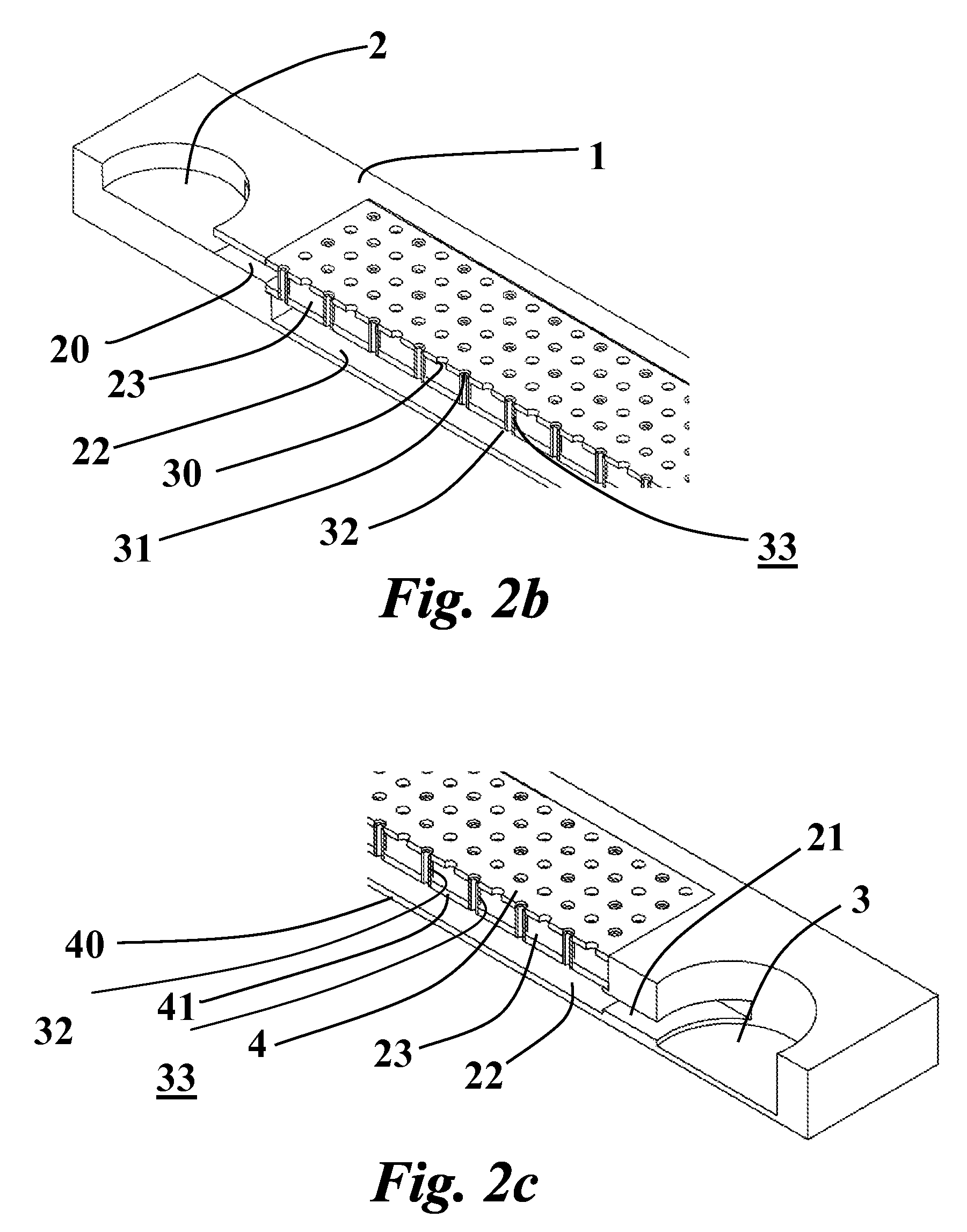Processes today are often limited by the speed at which they condition a surface or medium, which processes often require that the conditioned side not be touched.
Typical existing plating baths incorporate large tanks which must maintain adequate stirring to maintain uniformity of reactants, but chemicals are wasted because very little of the reactants are actually adjacent the substrates, and energy is wasted due to large electrode spacing and bath heating requirements.
Drying and solidification of inks is limited by the slow diffusion rates of solvents away from the media, and also by slow rate of diffusion of the required heat of vaporization from room temperature air to the evaporatively cooled media.
To date, these methods have been costly, bulky, and inefficient, prohibiting their use in small, low cost applications, such as small office and home printing.
However, all prior art methods have one or more of the following limitations:1. The apparatus used to manipulate the media cannot support the media without contacting at least one side of the media;2. The system requires the use of continuous media;3. In drying, considerable heat is wasted because the media does not absorb a substantial portion of the heat used;4. Friction is introduced into the media path which hinders, or renders unreliable, the media transport process, at high speeds;5. The dryer / conditioner apparatus is inherently complicated and therefore expensive and unreliable;6. The drying fluid flow disturbs other processes.
For example, in inkjet printing, ink droplets are deflected from their intended target on the media;7. The apparatus encloses the media, and is therefore bulky;8. Drying / conditioning is a compromise between what is desired, and what is possible, requiring changes in other parts of a system to accommodate such deficiencies.
It is not possible, or it is expensive, to recycle used materials or heat; or11.
The apparatus shape cannot be configured to accomplish, simultaneously, other functions in addition to drying / conditioning, such as flattening the media, or transporting and reorienting, or warehousing the media.
However, they never actually print at that rate because the ink takes at least 10 seconds to dry adequately before a successive page can be stacked upon the previously printed page.
The water in the ink sinks into the paper in about 5 seconds, and begins to swell the paper fibers about 1 percent, causing the paper to bow toward the side with ink on it, causing what is known as wet cockle.
Wet cockle can cause a head crash, where the paper buckles enough to hit the scanning printhead, often located about 60 mils above the paper surface.
Black pigment inks cannot contain surfactants to the extent that the pigment wicks across fibers, since that would result in jagged edges on letters which is highly undesirable.
Thus the black ink pigment is susceptible to smearing, since it is on the paper surface and mechanically in contact with the next sheet of paper which will be stacked on top of it.
Though pigments tend to coalesce and solidify when the water carrier is drawn into the paper (after at least 5 seconds), the pigment is often comprised of block copolymers similar to latex paint, thus pigments do not become permanent for days.
This problem of drying at greater than 30 pages per minute has been continually studied, and to date has not been effectively solved in a way that is suitable for small (less than 1 cubic foot), low cost (less than $100), printers or even printers that are 5 times as large, and 5 times as costly, and ⅕ the speed.
U.S. Pat. No. 6,463,674 by Meyers et al, which discloses an air impingement drying system that also fully encloses the paper, and, because of the large air boundary layer inherent in the geometry, Meyers system is inadequate to meet conditions stated above in the discussion of the Szlucha patent and only slowly dries the paper.
This has a high enough heat transfer rate, but would require, at a 30 pages per minute printing rate, that the vacuum hold down pressure be released and restored at least 4 times per second (for a 1 inch swath print mechanism), and it has no provision for adequate air movement to dry the ink.
None of the above are suited to simultaneous double sided printing since they all hold one side of the paper in the drying process.
 Login to View More
Login to View More  Login to View More
Login to View More 


